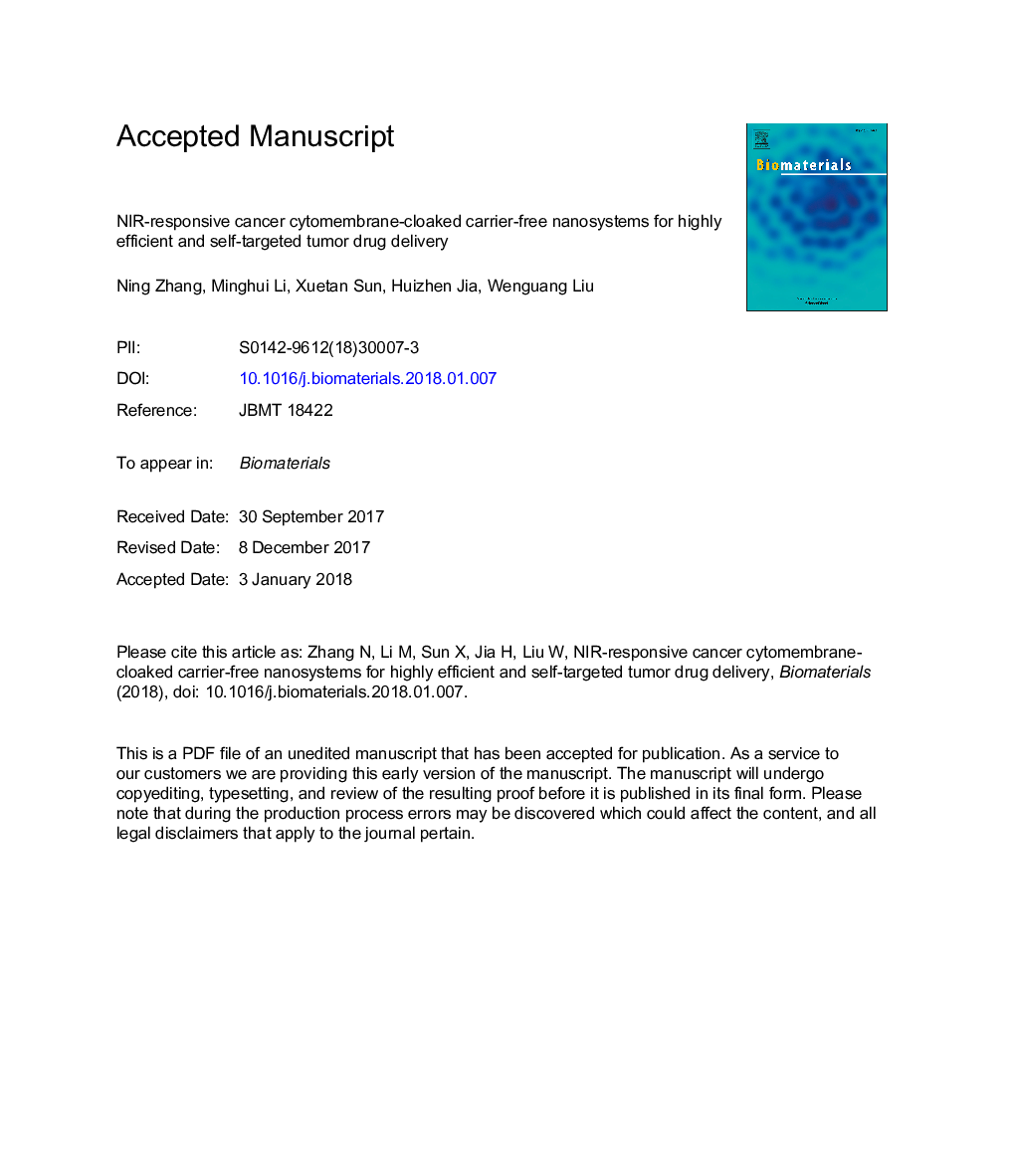| Article ID | Journal | Published Year | Pages | File Type |
|---|---|---|---|---|
| 6484682 | Biomaterials | 2018 | 32 Pages |
Abstract
Cell membrane-camouflaged nanoparticles for cancer therapy have received a burgeoning interest over the past years. However, the low drug loading and intratumoral release efficiency, and lack of precise targeting remains a big challenge; in addition, foreign carriers used may pose an expected burden in the course of metabolism. In this study, we designed and fabricated a novel NIR-responsive highly targeted carrier-free nanosystem by coating the exactly identical source of cracked cancer cell membranes (CCCMs) specifically derived from the homologous tumors onto the surface of the co-assembly nanoparticles of doxorubicin (DOX) and FDA-approved photothermal agent, indocyanine green (ICG). The nanosystems exhibited a high drug loading capacity (89.8%), cancer cell self-recognized ability and immune escape function. Further, the nanodrugs could be efficiently released for the membrane disturbance triggered by photothermal effect of ICG under NIR irradiation. The tumor-bearing mice model demonstrated that the self-carried DOX NPs@ICG@CCCM nanoparticles possessed a strong synergistic chemo-/photothermal therapeutic efficacy against tumors in vivo. The present strategy could be developed as a universal approach for designing and constructing carrier-free theranostic nanovehicles by intentionally selecting specific cancer cell membrane and the inner loading cargoes.
Keywords
Related Topics
Physical Sciences and Engineering
Chemical Engineering
Bioengineering
Authors
Ning Zhang, Minghui Li, Xuetan Sun, Huizhen Jia, Wenguang Liu,
